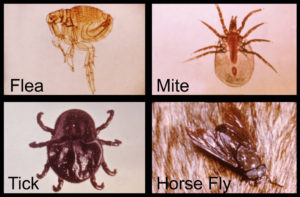Many people don’t consider oral health issues worthy of medical treatment. This is the reason why they tend to persist with plaque — the hardened layer of bacteria on the teeth. The untreated plaque buildup leads to swollen and bloody gums, the condition which is medically known as gingivitis. If it’s left untreated, Gingivitis eventually aggravates into periodontitis. This is an acute periodontal condition where the entire supporting structure of the oral cavity gets infected.
The continuous medical research shows that periodontal diseases are not just detrimental to the oral cavity. The unhealthy gums go on to cause many other medical complications as well. According to the statistics furnished by the CDC, nearly half of the US adult population is suffering from some sort of periodontal disease, attributing to other diseases as well. In this article, we are going to discuss some unforeseen connections between gum problems and various other medical issues.
Gum Diseases and Cardiovascular Complications
It’s not entirely necessary that people with heart issues also have any periodontal disease. Nor is it a convention that people with unhealthy gums eventually develop some cardiovascular problem. Nevertheless, there is some correlation between the two.
Smokers and people who frequently consume alcohol are two groups that can simultaneously develop gum and heart issues due to the side effects of their respective habits. Apart from these, there are some cases where unhealthy gums can become the underlying cause of cardiovascular disease.
Gingivitis is the disease that entails the inflammation of gums caused by bacteria found in the plaque. These bacteria can enter the bloodstream through the swollen gums to infest the arteries and the organs. In other words, the inflammation of gums can lead to the inflammation of different parts of the cardiovascular system which can lead to the eventual development of a more serious condition.
According to one research report, P. gingivalis is the most common found bacterium in the coronary arteries. This bacteria species actually instigates the periodontitis in the oral cavity that weakens the fleshy supporting structure of teeth. This bacterium can also deteriorate the artery walls to make hypertension a more serious problem for affected people.
Gum Diseases and Alzheimer’s
The connection between oral health issues and neurological problems also looks implausible. However, a growing body of research suggests that there is some definite connection between gum disease and the onset of Alzheimer’s Disease. There are two major findings that establish a connection between oral health issues and this most common cause of dementia.
One study conducted on the people suffering from Alzheimer’s shows that P. gingivalis is most likely to be present in their brains. Recent research has established a finer link between the two. Scientists have found out that the inflammation caused by P. gingivalis actually catalyzes the production of beta-amyloid—the protein that aggregates in the brain in the form of a plaque to cause Alzheimer’s.
This study has also changed the perception regarding the development of Alzheimer’s. For instance, for long, it was believed that Alzheimer’s is the function of age i.e. it eventually develops as one grows old. However, this study has indicated that the onset of Alzheimer’s in some cases takes place in response to the presence of a pathogen. In other words, people who take good care of their oral health might not experience the symptoms of Alzheimer’s in the later stages of life.
Gum Diseases and Cancer
There is no established connection between the two. People suffering from gum diseases generally don’t go on to develop a malignant tumor. However, several studies have unearthed the connection between teeth loss and the prevalence of cancerous tumor. But these studies have failed to establish any physiological connection between these two conditions.
There is a research paper that has somewhat tried to explain the correlation between gum diseases and tumors. Treponema denticola is bacteria found on swollen gums and other diseased parts of the oral cavity. According to the paper, the same bacteria are also found in some gastrointestinal tumors. The study, however, doesn’t discuss the role of this bacterium in the development of the tumor.
More research is needed to be conducted in order to understand the correlation between gum diseases and cancerous tumors.
Gum Diseases and Respiratory Issues
The development of respiratory issues is the least surprising among all the detrimental effects of gum diseases. It makes sense that unhealthy gums can also cause respiratory issues since both the oral cavity and lungs have the same access point i.e. the mouth. A research paper published just last month indicates that people with chronic gum issues are more likely to experience deteriorated respiratory functions.
The more direct connection between oral diseases and respiratory health is of course inflammation. The inflammation spreading out from the oral cavity can swell the bronchial tubes. This can result in the contraction of their diameters and the subsequent restriction of air flow. Besides cell-to-cell inflammation spread, the inhalation of bacteria-laden air from the oral cavity into the lungs can also cause infections and direct inflammation.
Scientists have also talked about the possibility that periodontal diseases can also lead to the onset of lung cancer. They theorize that enzymes produced due to bacterial action in the oral cavity can eventually end up in the lungs where they can promote the growth of pathogens. The presence of pathogens among respiratory tissues can change cell behavior into malignant nature.
How to Maintain a Healthy Mouth

It is clear that periodontal diseases can have far-reaching implications. By establishing good dental hygiene and dietary management, you can significantly decrease the likelihood of gum disease and subsequent serious issues discussed above.
Here are some of the most important ways to keep your gums happy:
- Using a powered brush is better than using a standard brush.
- Floss daily and don’t forget to brush your teeth before going to bed.A
- Always do post-meal gargles, particularly after consuming extra sugary and starchy substances
It is also important to go for a dental checkup even when you are not suffering from any apparent periodontal issue. A good dental cleaning is better than anything you can do on your own and is highly recommended. In addition, the dentist will be able to find any detrimental factors in your mouth that need attention.


 Depression can be described as a mood disorder. It may be classified as feelings of sadness, loss, anger or disappointment that impair a person’s day to day activities. The
Depression can be described as a mood disorder. It may be classified as feelings of sadness, loss, anger or disappointment that impair a person’s day to day activities. The  What is Processed Meat?
What is Processed Meat? Fresh meat consists of proteins, fats, and water. When the meat is processed, the components change, which in turn transform how the meat is digested and assimilated in our bodies.
Fresh meat consists of proteins, fats, and water. When the meat is processed, the components change, which in turn transform how the meat is digested and assimilated in our bodies.  Certain chemicals such as N-Nitroso compounds and polycyclic hydrocarbons, which are carcinogenic in nature, are produced during the production of processed meats. Cooking processed meats also produces heterocyclic aromatic amines as well as polycyclic aromatic hydrocarbons which are found in air pollution. Furthermore, nitrite and nitrate preservatives used to increase the shelf life of processed meats also release chemicals upon digestion that can lead to bowel cancer.
Certain chemicals such as N-Nitroso compounds and polycyclic hydrocarbons, which are carcinogenic in nature, are produced during the production of processed meats. Cooking processed meats also produces heterocyclic aromatic amines as well as polycyclic aromatic hydrocarbons which are found in air pollution. Furthermore, nitrite and nitrate preservatives used to increase the shelf life of processed meats also release chemicals upon digestion that can lead to bowel cancer. 




 Longtime use of marijuana can affect the musculoskeletal system as well. Researchers at The University of Edinburgh, UK have found out that people who regularly use marijuana experience deterioration of bone density that disturbs their BMI. They also found out that it can lead to the development of the chronic condition of Osteoporosis in the later stages of life.
Longtime use of marijuana can affect the musculoskeletal system as well. Researchers at The University of Edinburgh, UK have found out that people who regularly use marijuana experience deterioration of bone density that disturbs their BMI. They also found out that it can lead to the development of the chronic condition of Osteoporosis in the later stages of life. Several research studies have shown that the use of marijuana by women during pregnancy can affect the cognitive development of the child in the womb. Newborn children can face many problems throughout life due to marijuana consumption by mothers during pregnancy.
Several research studies have shown that the use of marijuana by women during pregnancy can affect the cognitive development of the child in the womb. Newborn children can face many problems throughout life due to marijuana consumption by mothers during pregnancy.

 June 27th is National PTSD awareness day. While there is still a general lack of understanding of
June 27th is National PTSD awareness day. While there is still a general lack of understanding of 

 Global Temperature Rise:
Global Temperature Rise:
 Disrupting your regular diet and going overboard with overeating is pretty easy. However, its implications can be far-reaching. For instance, it can waste all the progress you made through exercise. Moreover, it can make you more vulnerable to many unwanted health conditions.
Disrupting your regular diet and going overboard with overeating is pretty easy. However, its implications can be far-reaching. For instance, it can waste all the progress you made through exercise. Moreover, it can make you more vulnerable to many unwanted health conditions.